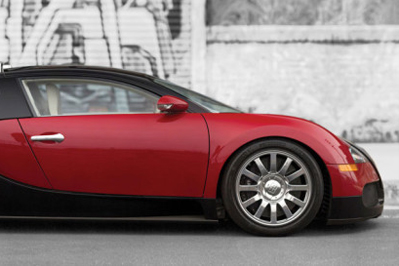Sacrificing Design for Safety
Many believe that it’s difficult, if at all possible, to find modern cars with the character of those built before 1970. Why 1970? That was the year the National Highway Traffic Safety Administration- or NHTSA- was formed. While pursing an admirable goal of improving the overall level of safety in cars on the road, the not-so-hidden side effect was the beginning of the homogenizing of automotive design, largely due to the expense of finding imaginative ways to meet the requirements of safety legislation.
This legislation established, among other things, the height at which bumpers and headlights had to sit, what might cause ‘secondary impact’ damage to passengers inside the car and more. Later regulations even entered the area of the effect of a car’s design on the trajectory of a struck pedestrian. As a result, before the first stylus is laid to pad, a designer of cars has quite a few fixed points from which he or she must begin, a far cry from the wide-open situation in the mid-sixties.
Compounding the onset of safety and emissions regulations came the oil shocks of the early 70s, which left the manufacturers scrambling to ‘downsize’ and ‘economize’ everywhere and everything. Do you recall the Mustang II? The car as appliance began its rise, with once respected badges being slapped on barely driveable cars, casually assembled by workers who were probably more ashamed of them then the people who were forced to buy them.
From Teenage Pinup to Auction Queen
Despite that idea, it’s clear that the collector car market has responded with enthusiasm to many cars built after the imposition of those laws and especially with the rolling 25-year exemption from safety and emissions rules (for those who live outside of the state of California, that is) many now desirable cars from the last two and a half decades which had been off-limits for us are now within grasp.
I mentioned the rise of the ‘Youngtimer’ classic in a Tale of 230s. These were commonly icons of the 70s and 80s, the cars seen in posters on teenagers’ bedroom walls around the world- the Ferrari Testarossa, Lamborghini Countach and Porsche 930 Turbos chief among them. Given the usual ‘collector bell curve’ these would be the items most desired by today’s 52 year olds. And indeed these cars are attracting the attention of that demographic, just coming into their most disposable cash years.
These new classics were also important in the history of the development of the motor vehicle in the 20th Century. Many of us can remember that by the mid-70s we despaired that we would never see a true ‘performance car’ again. Now that we find ourselves in the age of 500+hp cars in every maker’s showroom, it’s instructive to recall the effect the poster cars had on our psyches when they appeared.
A Generational Shift
But, the bell curve isn’t always accurate. The 2006 Bugatti Veyrons, 2005 Ferrari 575 Superamericas and Mercedes-Benz SLR McLarens now being snapped up at impressive prices at auctions are clearly not all being purchased by 24 year-old tech billionaires. Instead, what many perceive as examples of ‘generational shift’ in collecting may actually be examples of ‘mature’ collectors seeking a more comfortable, reliable and usable ride.
These may include people who have owned 1950s, ‘60s or ‘70s sports and GT cars and want to continue to enjoy engagement in their driving while avoiding some of the ‘adventure’ that comes with more vintage motoring. The idea of a weekend trip in the ’58 300SL Roadster seems inviting but the reality of taking the SLR instead and having satellite radio, GPS and heated seats for the cold morning starts might be more realistic.
Baby Boomers and Millennials Agree
They are also very appealing to a group of people who want to set themselves apart from their peers who are content to email their local Mercedes, Lamborghini, Ferrari or McLaren dealer and take what might be on the lot or coming on the next truck. When you show up at the Wharton or Stanford reunion of the Class of 1980, why have to embarrass yourself by having to specify the color of your Lamborghini Aventador to the valet parking attendant when you can wow them with the only Ferrari 599 SA Aperta in the surrounding 40 zip codes?
It’s one of those rare instances in which we Baby Boomers can share an opinion with the Millennials without embarrassment or explanation. Don’t try it with music or fashion, it’s likely not to be a pretty thing.
Written by Donald Osborne, ASA of Automotive Valuation Services
For Premier Financial Services







